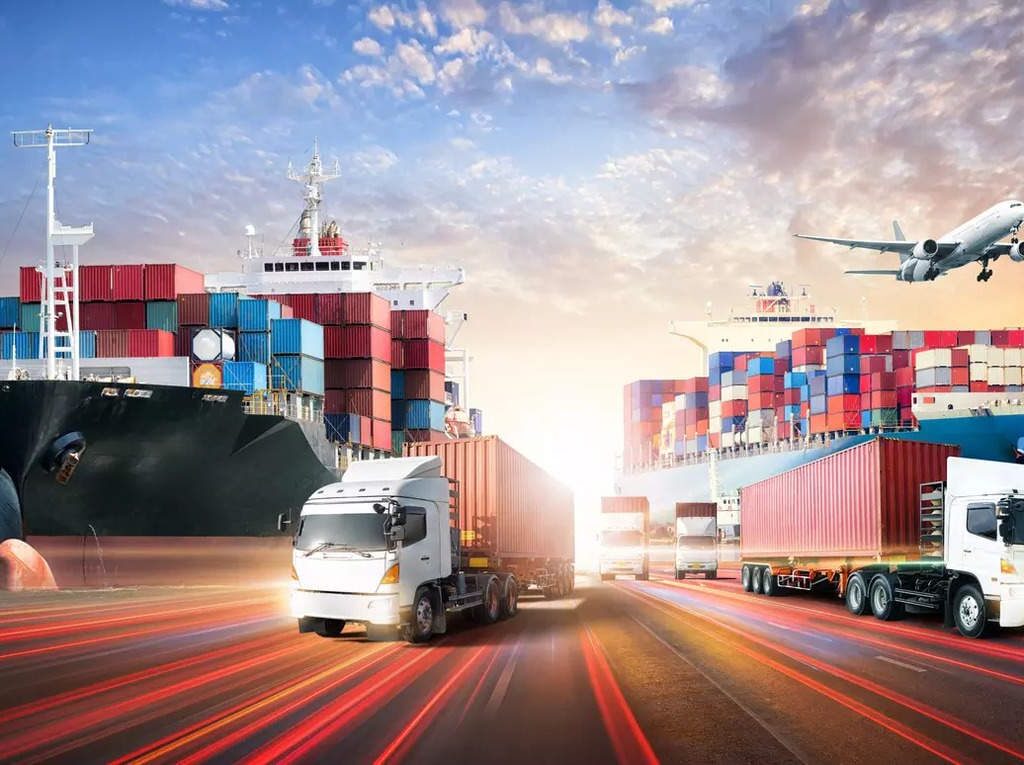Are you concerned about the future of supply chains in 2024? Well, do not worry. We have you covered!
The supply chain is as old as human beings themselves. In ancient times, challenges like navigating uncertain routes and risky territories were significant hurdles in the way of supply chain systems. Today, we have complexities of wars, pandemics, and tremendous technological advancement. Well, what has changed? Almost everything except that we still need to understand the challenges and take the best possible decisions to handle them!

Entering this decade, the role of the supply chain has significantly increased, becoming a cornerstone for many businesses. What are the businesses primarily looking for? An effectively managed supply chain! Well, how do they define an effectively managed supply chain? It depends. For some, it’s all about cost efficiency; for others, the balance between customer service trumps everything. Lately, the spotlight has shifted towards resiliency, sustainability, and the integration of AI in supply chain operations. While the trends and organizational needs are constantly changing, if you want to know what is latest in 2024, keep reading.
In this blog, we will explore the future of supply chains in 2024 – the fresh opportunities and the challenges waiting to be tackled.
Emerging Supply Chain Trends and Opportunities
Stepping into the future of supply chain in 2024, staying ahead of the latest supply chain trends is essential. Let’s break it down and talk about four game-changers shaking up the scene!

1. Generative AI
Driven by generative AI, machine intelligence can add $2.6-4.4 trillion in yearly value to the world economy, with improvements in supply chain and manufacturing productivity accounting for about 25% of this potential.
Almost all businesses need a conversational AI, or in other words, an AI-enabled chatbot. The application of generative AI solutions—particularly conversational AI solutions—will skyrocket in the supply chain industry by 2024. Consequently, this will streamline logistics processes and quicken the onboarding of suppliers. Conversational AI is poised to transform how users engage with their business networks, from real-time transcription, sentiment analysis, and feedback monitoring to inventory management..
2. Growing Impact of IoT in Supply Chain
Real-time supply chain monitoring and visibility are crucial for prompt decision-making and disruption response. This is why sensors and Internet of Things devices are increasingly being used. The term “real-time monitoring and visibility” describes having the most recent information and knowing what is happening in your supply chain. You can monitor operational procedures as they take place at every link in your supply chain with real-time visibility.
Managers can more effectively anticipate issues down the road and respond swiftly to interruptions in the supply chain by collecting real-time data about them. As a result, there are fewer expenses, fewer interruptions, and an advantage over competitors.
3. Sustainability as a Risk Mitigation Strategy
Many now see sustainable supply chain practices as a calculated risk-mitigation strategy for resource scarcity, climate change, and regulatory changes. Many multinational corporations increasingly place a premium on sustainability initiatives. Using sustainable and ethical sourcing methods is now a top concern. Compared to 78% before the pandemic, 88% of worldwide consumers favored businesses that used ethical sourcing practices. Additionally, 83% of global customers are willing to pay extra for goods that come from ethical sources.
Companies must have a sustainability strategy in light of the growing consumer desire for sustainable practices, new regional rules, and more robust ESG standards from the European Union.
4. Prioritizing Cybersecurity
Cybersecurity needs to be a primary concern as supply chains become more digitally integrated to ensure the future of supply chains in 2024. Supply chain security depends on safeguarding digital infrastructure against intrusions and data leaks.
A cyber security compromise in their supply chain hurts 98% of firms, according to BlueVoyant’s supply chain protection research. Statista said there were over 245 thousand malicious attacks on the open-source software (OSS) supply chain in 2023, aimed at upstream open-source ecosystems, such as JavaScript, Java, .NET. Since 2017, that figure has increased significantly—by an estimated 235% year over year. With a global average of 277 days, these breaches take longer to detect and contain than other intrusions. As expected, 98% of organizations had relationships with outside parties that experienced cybersecurity breaches the previous year. This indicates that cybersecurity should be a top priority for the supply chain industry to grow in 2024.
Supply Chain Challenges in 2024
As we continue our journey through the future of supply chains, get ready to tackle the nitty-gritty of Supply Chain challenges in 2024. It’s time to zoom in on four hurdles keeping the industry somewhat vulnerable at times!

1. Labour Shortages
External issues, pandemics, inflation, and political instability have contributed significantly to the severe labor shortage in the supply chain. Every industry experiences labor shortages, which have a knock-on effect on other industries and make the problem more challenging to resolve. Consider a factory that has too few employees. Because there aren’t enough workers, manufacturing slows down and often stops altogether. This leads to imbalanced inventory levels, the majority of which are felt by distributors. The lack of labor affects the movement of commodities between parties in logistics, which causes delays and disgruntled clients.
This challenge can be managed by:
- Re-evaluating the hiring process
- Examining retention practices
- Assessing compensation strategies
- Striving for a balanced work environment
2. Ocean freight bottlenecks
A freight bottleneck is a persistent traffic jam on ocean highways caused by volume congestion that affects port capacity, like the one happened in the Red Sea. Massive congestion has resulted from delays caused by external pressures like pandemics, conflicts, and natural disasters, with ports operating over sustainable capacity for months due to labor shortages and shutdowns. Because of the ongoing delays caused due to conflicts in Europe and the Middle East, the supply chain is still quite vulnerable this year.
These dangers can be controlled in many different ways within technology:
- Getting on board with digital supply chain changes
- Using cloud-based solutions
- Checking data in real-time for better visibility
- Making international shipping easier with standardized documents
- Cutting down on fines and simplifying procedures
3. Increasing inflation
Forecasts suggest that inflation will still be a problem in 2024 despite expectations to the contrary. The OECD and IMF forecast that global economic growth will remain slow in 2024, and the European Central Bank decides to maintain rates at or near 4% to reduce inflation. However, despite these attempts to reduce inflation, 2024 will see a surge in inflation, ultimately affecting the supply chain.
Because the supply chain is interrelated, price increases in one place impact the chain elsewhere. The cost of labor, energy, and transportation is currently rising at an enormous rate. The current supply chain is severely put at risk by all of these. According to the Economics Observatory, the Consumer Price Index in the USA indicated a 3.2% increase in consumer prices in December 2023 over the same month the previous year.
This threat can be managed by:
- Diversifying suppliers to spread the risk
- Partnering with the right logistic service providers
- Setting clear timeframes in contracts
- Being ready for unexpected price twists
- Keeping an eye on trends
Do you want to know more about how to optimize your e-commerce growth with next-day delivery? Click here.
4. Tariffs and Sanctions
In 2024, successful supply chain risk management will depend on being updated on geopolitical events and regulatory changes. Important elections planned in nations that account for half of the world’s population and geopolitical tensions and conflicts are the two interrelated drivers that are crucial. When combined, they will serve as a stimulant for additional government action.
Trade sanctions and tariffs are two of the few widely available instruments that political leaders worldwide use. Furthermore, leaders frequently seek to demonstrate that they are people of action. More limitations and the ensuing price hikes are anticipated to affect global supply chains.
These challenges can be managed by:
- Staying informed about global news and regulations.
- Understanding how tariffs and restrictions are impacting your supply chain.
- Diversifying your supplier base to spread the risk.
- Ensuring contracts are flexible to adapt to geopolitical changes.
- Developing contingency plans for potential disruptions in the supply chain.
As we wrap up our journey through the future of supply chains in 2024, let me introduce you to Ecom Logistics – Welcome to Ecom Logistics, where seamless logistics solutions redefine your supply chain experience while keeping sustainability at the forefront of our operations. From efficient last-mile delivery that brings your products right to the doorstep, to streamlined fulfillment services ensuring swift order processing and robust freight management for secure and timely cargo movement – we’ve got every leg of your journey covered. Our commitment is to deliver beyond expectations, ensuring your goods reach their destination quickly, precisely, and with unparalleled reliability. Experience the pinnacle of logistics excellence with Ecom Logistics – Your Pathway to Effortless Shipping.
Book a free consultation today! Click Here




